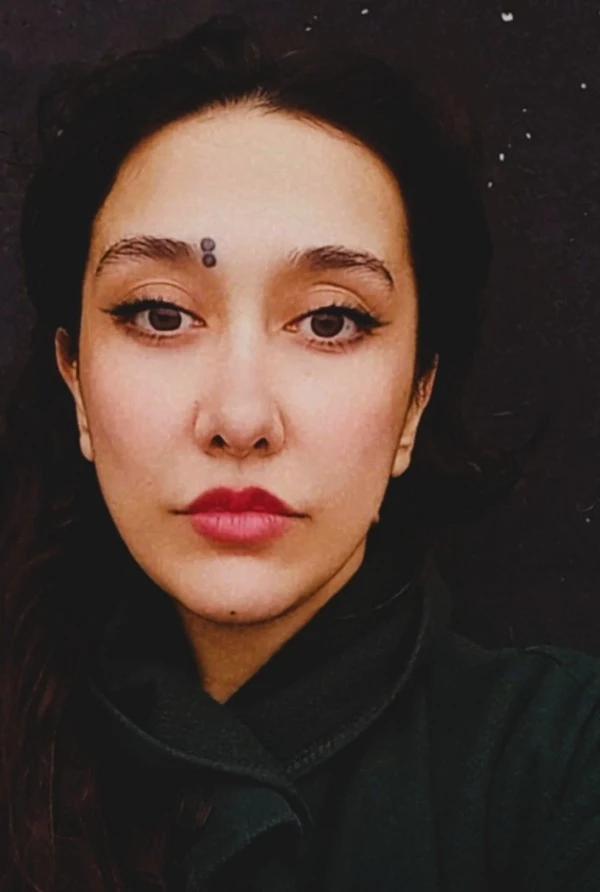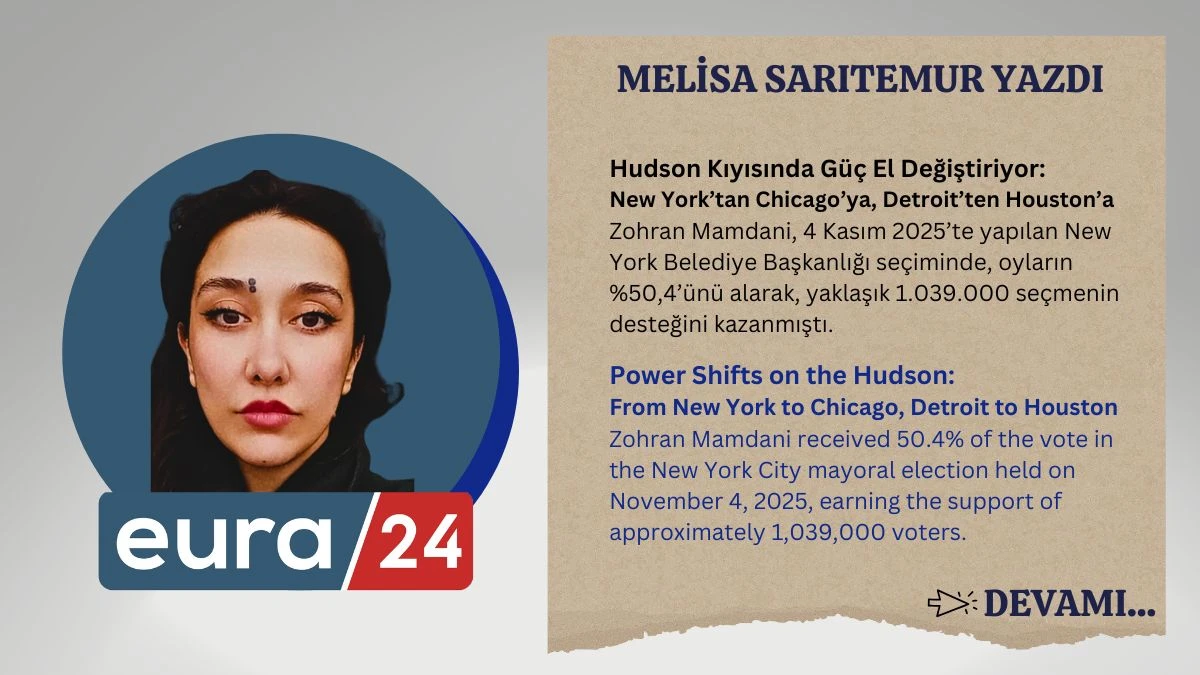
Zohran Mamdani, 4 Kasım 2025’te yapılan New York Belediye Başkanlığı seçiminde, oyların %50,4’ünü alarak, yaklaşık 1.039.000 seçmenin desteğini kazanmıştı. Seçimin ardından Başkan; Donald Trump, Mamdani’nin zaferini yorumlarken “Dün gece New York’ta egemenliğimizin bir kısmını kaybettik” diyerek, sonuçları sadece yerel bir kayıp olarak değil, ulusal güç dengelerinde de etkisi olan, bir kırılma olarak değerlendirmişti. Trump; ayrıca seçim sürecine dair eleştirilerde bulunarak, ulusal siyasetteki gerilimlerin New York üzerinden simgelendiğini de, vurgulamıştı. Peki, tüm bu veriler ışığında bu seçimi ve sonuçlarını nasıl okumalıyız? Aslında, 17. yüzyıldan günümüze uzanan New York’un siyasi ve sosyolojik dönüşümü, bugün yaşanan kırılmaların arka planını anlamak için eşsiz bir rehberdir. Çünkü; New York, Amerika’nın her dönem değişen ruh hâlini, demografik kaymalarını ve sınıfsal mücadelelerini bünyesinde en görünür şekilde barındıran, bir şehir olmuştur.
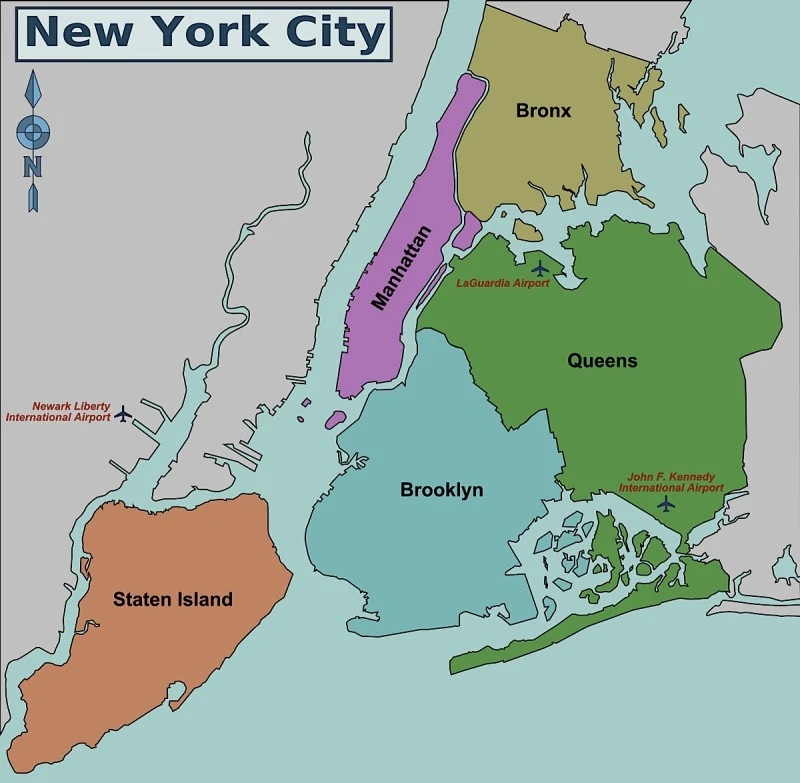
17. yüzyıldan günümüze uzanan New York’un siyasi ve sosyolojik dönüşümünü ve bu dönüşümün, 2025’teki sonuçlarla nasıl yeniden görünür hâle geldiğini anlamak için, adım adım realist bir bakışla ilerleyelim. New York’ta 1600–1900 arası dönem; ticaretin, göçün, sermaye birikiminin ve şehir elitlerinin temellerinin atıldığı yüzyıllardır. New York, aslında 1624–1664 arasında bir Hollanda sömürgesi olarak “New Amsterdam” adıyla kurulmuştu. Daha ilk yıllarından itibaren dini, etnik ve kültürel çeşitlilik iç içe geçmiş durumdaydı. Hollandalı tüccarlar, Afrikalı köleler, Yahudi göçmenler ve İngiliz yerleşimciler, şehrin başından beri çoğulcu bir karakter taşımasını sağladı.1664’te İngilizlerin bölgeyi ele geçirmesiyle, şehir bugünkü adını aldı: New York.
19.yüzyıla gelindiğinde, büyük göç dalgaları şehrin kimliğini kökten değiştirdi. Özellikle İrlandalılar, İtalyanlar ve Doğu Avrupalı Yahudiler, New York’un demografik yapısını yeniden şekillendiren ana topluluklar hâline geldi. Aynı dönemde Wall Street’in yükselişi ve liman ticaretinin genişlemesi, şehrin ekonomik gücünü merkezileştirerek sermaye birikimini hızlandırdı. Böylece bankerler, sanayiciler ve medya patronlarından oluşan “ticari elitler”, New York siyasetinde kalıcı ve etkili güç odaklarına dönüştü. Şehir; 19.yüzyılın sonlarında ‘’Tammany Hall’’ adlı Demokrat Parti makinesi tarafından, yönetiliyordu. Bu yapı, göçmen işçi sınıfını kontrol eden, karşılığında onlara hizmet sağlayan ama yukarıdan aşağıya patronaj ilişkileriyle işleyen, bir sistemdi. Yani; New York, 19.yüzyıldan itibaren ‘’elit sermaye ve göçmen kitle’’ dengesi üzerinde yükseldi. Elitler parayı, göçmenler ise; oy gücünü getirdi. Bu ikili yapı 20.yüzyıla kadar sürdü. 20.yüzyılın başlarına geldiğimizde, Yahudi, İtalyan ve İrlandalı topluluklar siyasette giderek güç kazanmıştı. ‘’Etnik siyaset’’ dediğimiz olgu, tam da bu dönemde kurumsallaşmıştı.
(1930’lar) Büyük Buhran ile birlikte, sosyal politikalar ve işçi sınıfı hareketleri (örneğin; Roosevelt’in New Deal politikları) New York’un sosyal demokrat yönünü güçlendirmişti. İkinci Dünya Savaşı sonrasındaki dönemde de, Afro-Amerikan topluluk; Harlem’de, Latin topluluklar; Bronx ve Queens’te yoğunlaşmaya başlamıştı. Sivil haklar hareketleri, artış göstermiş ve bu hareketler şehirlerde eşitlik ve temsil taleplerini büyütmüştü. Bu dönemde Müslüman kimliğin ilk siyasi görünürlüğü, ‘’Malcolm X’’ aracılığıyla yükselmişti. ( Harlem 1960’lar) 1970’lere varınca da, yaşanan ekonomik kriz, suç oranlarının artışı ve ‘’ White flight’’ ( beyaz nüfusun banliyölere taşınması) şehirde yeni bir sosyo-ekonomik kırılmaya sebep olmuştu. Yani aslında bu dönem, kimliklerin politikleştiği ama ‘’sermaye-elit’’ gücünün hala baskın olduğu bir dönemi işaret eder. Müslümanlar burada henüz siyaset sahnesinde örgütlü halde değiller, ama örgütlü siyasetin temellerinin atıldığı bir evrededirler.
 1980-2001 yılları finansın yükselişe geçtiği, neoliberal bir dönemi temsil eder. Bu dönem, Manhattan hegemonyasının başladığı evredir. Wall Street yeniden güç kazanır, Finans sektörü ve gayrimenkul elitleri ( Trump dâhil ) şehir yönetiminde etkili olurlar.(1980’ler) Donald Trump, bu dönemde sembolik bir figürdü, gayrimenkul, medya ve beyaz maskülen girişimci mitiyle, New York’un neoliberal dönüşümünü, temsil ediyordu. Takip eden yıllarda, (1990’lar) şehrin Belediye Başkanı; Rudy Giuliani, ‘’law and order’’ politikasıyla suçla mücadele ederken, aynı zamanda şehirdeki azınlık topluluklara karşı, sert güvenlik uygulamaları getirmişti. Ve bunun üzerine 11 Eylül 2001 ile birlikte; şehrin travması hem toplumsal hem politik düzeyde büyük bir çatlama yaşadı. Bu dönemde: FBI kayıtlamaları, profil çıkarma, camileri izleme programları, ciddi oranda artış gösterdi. Aslında bu yıllar, Trump-Giuliani çizgisinin kurduğu neoliberal güvenlikçi ideolojisinin, doruk noktasıdır. Burada Müslüman kimlik kriminalize edilirken, sermeye elitleri daha da güçlendirildi. 11 Eylül birçok noktada kırılma yarattı. 11 Eylül sonrası hızla artan İslamofobi dalgasında, Müslüman Amerikalılar, kamuoyunda baskı altında kaldılar. Ancak bu dönem, aynı zamanda Müslüman sivil toplumun örgütlendiği, bir dönem oldu (CAIR, ICNA , MAS, MPAC gibi kurumlar güçlendi). Sonraki Obama döneminde ise; (2008-2016) göçmen hakları, kültürel çeşitlilik ve Müslüman kimliğin görünümü kısmen de olsa arttı. Trump dönemine geldiğimizde ise, durum tersine dönmüştü ve ‘’Muslim ban’’ göçmen karşıtı söylemlerle ulusal güvenlik ideolojisi ve İslamofobi yeniden yükseldi.
1980-2001 yılları finansın yükselişe geçtiği, neoliberal bir dönemi temsil eder. Bu dönem, Manhattan hegemonyasının başladığı evredir. Wall Street yeniden güç kazanır, Finans sektörü ve gayrimenkul elitleri ( Trump dâhil ) şehir yönetiminde etkili olurlar.(1980’ler) Donald Trump, bu dönemde sembolik bir figürdü, gayrimenkul, medya ve beyaz maskülen girişimci mitiyle, New York’un neoliberal dönüşümünü, temsil ediyordu. Takip eden yıllarda, (1990’lar) şehrin Belediye Başkanı; Rudy Giuliani, ‘’law and order’’ politikasıyla suçla mücadele ederken, aynı zamanda şehirdeki azınlık topluluklara karşı, sert güvenlik uygulamaları getirmişti. Ve bunun üzerine 11 Eylül 2001 ile birlikte; şehrin travması hem toplumsal hem politik düzeyde büyük bir çatlama yaşadı. Bu dönemde: FBI kayıtlamaları, profil çıkarma, camileri izleme programları, ciddi oranda artış gösterdi. Aslında bu yıllar, Trump-Giuliani çizgisinin kurduğu neoliberal güvenlikçi ideolojisinin, doruk noktasıdır. Burada Müslüman kimlik kriminalize edilirken, sermeye elitleri daha da güçlendirildi. 11 Eylül birçok noktada kırılma yarattı. 11 Eylül sonrası hızla artan İslamofobi dalgasında, Müslüman Amerikalılar, kamuoyunda baskı altında kaldılar. Ancak bu dönem, aynı zamanda Müslüman sivil toplumun örgütlendiği, bir dönem oldu (CAIR, ICNA , MAS, MPAC gibi kurumlar güçlendi). Sonraki Obama döneminde ise; (2008-2016) göçmen hakları, kültürel çeşitlilik ve Müslüman kimliğin görünümü kısmen de olsa arttı. Trump dönemine geldiğimizde ise, durum tersine dönmüştü ve ‘’Muslim ban’’ göçmen karşıtı söylemlerle ulusal güvenlik ideolojisi ve İslamofobi yeniden yükseldi.
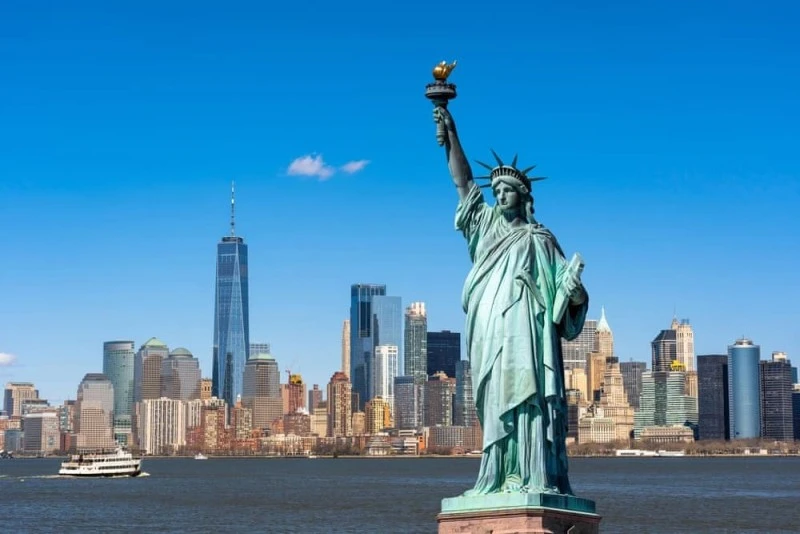
Ancak bu baskı; Müslüman gençler arasında politikleşmeyi hızlandıran bir şeye döndü. Ve 2018 sonrası ABD genelinde Müslüman aday sayısında rekor artış oldu. (İlhan Omar, Rashida Tlaib vb) Bu noktada Trump’ın ideolojisi büyük bir baskı yarattı ama, aynı zamanda bu baskı karşı bir mobilizasyon doğurdu. (Tıpkı Newton’un 3. yasasında belirttiği gibi; ‘’Bir cisme etki eden her kuvvete, eşit ve zıt bir tepki kuvveti ortaya çıkar.’’) Burada oluşan mobilizasyonun tabanını, New York gibi şehirlerde doğup büyüyen, ikinci nesil Müslüman Amerikalılar oluşturdu.Şimdi 2020-2025 dönemi; pandemi, eşitsizlik ve yeni sol taban siyaseti ile yeniden şekilleniyor. Burada pandemi sonrası; kira krizi, işsizlik ve gelir eşitsizliği, New York’u derinden etkiledi. 2020’lerde ‘’Black Lives Matter’’ ve Filistin dayanışması gibi hareketler, şehirde güçlü destek buldu. Tam da böyle bir ortamda; Zohran Mamdani gibi sosyalist eğilimli, göçmen kökenli, Müslüman kimlikli adaylar yükselmeye başladı. Yani aslında sürece; en baştan bakıldığında; ‘’2025 New York seçiminin’’ bu uzun tarihsel birikimin, bir sonucu olduğu net görülür. Bu, uzun yıllar süren elit hegemonyasına karşı, bir taban dalgasıdır. 11 Eylül sonrası bastırılan Müslüman kimliğin bir kamusal onarım mücadelesi ve ekonomik sınıfsal taleplerin birleşimidir. Bu elbette ki, bir devrim değildir ama şehir (New York) tarihinde, bu seçim artık yeni bir dönüm noktasıdır. Sermaye elitleri tabi ki, güçlerini kaybetmedi ancak; ilk kez ‘’taban temsili’’, Müslüman- göçmen bir adayın eliyle bu kadar görünür hale gelmiş oldu. Bu değişim, ulusal düzeye ( örneğin Washington) henüz tam yansımamış olsa da, büyük şehirlerin (NYC, Chicago, LA) yeni siyasal yönelimini aslında işaret ediyor. En baştan tarihsel sürece baktığımızda, her yeni göçmen dalgasının önce dışlanmış, fakat sonra güç kazanmış olduğunu görüyoruz. 1850’lerde İrlandalılar, 1920’lerde İtalyanlar, 1950’lerde Yahudiler, 2020’lerde Müslümanlar… Gelinen noktada artık, Müslüman Amerikalılar; ‘’yeni gelenler değil’’ New York’un siyasi hafızasında yer edinmiş bir topluluk haline gelmişlerdir. Bu noktada akla yeni bir soru geliyor. New York’ta esen bu rüzgâr domino etkisi yaratır mı? Yani örneğin, Chicago, Detroit, Minneapolis gibi şehirlerde, Müslüman veya göçmen adayların; gelecek seçimlerde yükselme ihtimalleri var mı? Aslında New York, Amerikan tarihinde daima, siyasi yeniliklerin laboratuvarı olmuştur. 19.yüzyılda işçi sendikaları tam da burada doğmuştu. 20.yüzyıl başlarında, kadın hareketi ve sosyal reformlar yine burada başlamıştı. Ve yine 21.yüzyılda, göçmen-Müslüman temsili burada yükseldi. Ve genellikle bu şehirde olanlar, birkaç yıl sonra; Chicago, Detroit, Minneapolis gibi sanayi ve göçmen merkezlerine yansır. Yani aslında New York; Amerika’nın, politik barometresidir. Rüzgâr; burada dönerse, kısa sürede bunu, diğer şehirler hissetmeye başlar.
Şimdi realist perspektiften şehirlerdeki Müslüman göçmen dağılımına baktığımızda, New York yaklaşık 800.000, Chicago, IL 400.000, Detroit / Dearborn, MI, 300.000, Minneapolis, MN 150.000, Houston, TX 200.000, Los Angeles, CA 250.000 Müslüman göçmen nüfusa sahip olduğunu görüyoruz. Bu tablo aslında bize; New York’taki bu hareketin, tekil değil ulusal bir dalganın parçası olabileceğini, net gösteriyor. Şehir şehir değerlendirme yaptığımızda, New York’taki dönüşümün izlerinin, farklı yoğunluklarda da olsa, ülkenin diğer büyük metropollerinde de, hissedildiğini görüyoruz. Örneğin Chicago; uzun süredir işçi sınıfı hareketlerinin, sendikal örgütlenmenin ve göçmen politikalarının kalesi konumundaydı. Eğer “Mamdani modeli” diyebileceğimiz, sosyal adalet ve kimlik temsili sentezi, başarı hikâyesine dönüşürse, Chicago bu modelin en hızlı ithal edileceği, şehirlerden biri olacaktır. Zaten; İlhan Omar ve Rashida Tlaib gibi figürler, Illinois-Michigan hattında, güçlü destek buluyor; bu nedenle; yakın gelecekte Müslüman veya Güney Asyalı adayların, şehir konseyi düzeyinde ciddi kazanımlar elde etmesi, oldukça muhtemeldir.
Detroit/Dearborn hattında ise; tablo daha da belirgin. ABD’nin ilk Arap Müslüman belediye başkanı Abdullah Hammoud’un; 2021’de seçilmesi, bölgeyi ulusal ölçekte sembolik bir merkez hâline getirdi. Mamdani’nin başarısı, bu bölgeyi yalnızca moral olarak güçlendirmekle kalmayacak, aynı zamanda Detroit’in ekonomik ve sosyal politikalarında, benzer ve ilerici dönüşümün kapısını aralayacaktır. Dearborn–Detroit hattı, hâlihazırda Müslüman-Filistin dayanışmasının en güçlü politik zeminine sahip olduğu için, bu eksendeki ortak kampanyaların, daha da artması beklenebilir.
Minneapolis/St. Paul ise; İlhan Omar’ın ulusal temsili sayesinde, uzun süredir ilerici göçmen siyasetinin, sembol şehirlerinden biridir. New York’taki zafer, bu bölgedeki genç Müslüman adaylara hem cesaret, hem de pratik bir model sunuyor. Somali-Amerikan topluluğu ile Latin ve siyah ilerici hareketlerin güçlü koalisyonu düşünüldüğünde, 2029’a kadar Minneapolis’te bir Müslüman belediye başkanı adayının, ciddi biçimde yarışması artık uzak bir ihtimal değildir.
Los Angeles’ta ise; Müslüman topluluk daha dağınık olsa da (Pakistanlı, İranlı, Afgan, Etiyopyalı ve Arap kökenli oldukça çeşitli bir nüfusa sahip) siyasal mobilizasyon daha çok kimlik siyasetinden değil, kira krizi, ekonomik adalet ve göçmen hakları etrafından gelişebilir. Bu nedenle New York’un sosyal adalet merkezli modeli; LA’da, kültürel temsilden çok, sınıfsal mücadele üzerinden yankı bulabilir. Bir sonraki seçime kadar, bir Müslüman belediye başkanının çıkması zor görünse de, şehir konseyi ve ilçe düzeyindeki temsilin belirgin biçimde artması beklenebilir.
Houston/Dallas ise; daha muhafazakâr bir eyalet düzenine sahip olsa da, özellikle Houston’da enerji sektörü, yüksek eğitimli göçmenler ve genç Müslüman profesyonellerin oluşturduğu yeni taban, giderek politikleşiyor. Bu nedenle Mamdani’nin başarısı, burada “liberal İslamcı” ya da “sosyal adaletçi Müslüman” kimliklerin görünürlüğünü artırabilir. Texas’ın değişen demografisi düşünüldüğünde, Houston’ın 2033’lerde “mavi” bir şehir hâline gelmesi ihtimal dışı değil; hatta bu dönüşümü hızlandırabilecek tetikleyici unsurlardan biri de; tam olarak, Mamdani gibi figürlerin yarattığı politik ivme olabilir. Sonuç olarak, Trump ve benzeri popülist-milliyetçi ideolojilerin; New York, Chicago ve Los Angeles gibi küresel şehirlerde hızla zemin kaybetmesi, tesadüf değildir. Bu metropoller, demografik olarak göçmen ağırlıklı, ekonomik olarak birbirine bağlı ve kültürel olarak küresel bir yapıya sahiptir. Bu nedenle Trumpizm’in etkisi, artık banliyö ve kırsal Amerika ile sınırlı kalırken, büyük şehirler post-Trump dönemi siyasetinin, yeni laboratuvarı hâline geliyor. Zohran Mamdani’nin zaferi de, tam bu dönüşümün simgesi: Bu yalnızca bir seçim başarısı değil, şehirlerin demografik ve ekonomik gerçekliklerinin popülist-milliyetçi ideolojilere karşı nasıl doğal bir direnç hattı oluşturduğunun, somut bir göstergesidir. New York, Houston ve diğer metropoller artık sadece Demokrat kaleleri değil; aynı zamanda çeşitliliğin, kapsayıcılığın ve sosyal adalet talebinin, siyaseti yeniden tanımladığı yerlerdir. Mamdani’nin yükselişi; liberal ve sosyal adaletçi kimliklerin görünürlüğünü artıran, tarihsel bir dönüm noktası olmanın ötesinde; şehirli seçmenin ağırlığının, ulusal siyasetin yönünü değiştirmeye başladığını da, net bir biçimde ortaya koyuyor.
-----------------------------------------------------------------------------------------------------------------
Power Shifts on the Hudson: From New York to Chicago, Detroit to Houston
Zohran Mamdani received 50.4% of the vote in the New York City mayoral election held on November 4, 2025, earning the support of approximately 1,039,000 voters. Following the election, President Donald Trump commented on Mamdani's victory, saying, "We lost some of our sovereignty in New York last night," interpreting the results not only as a local loss but also as a rupture in the national balance of power. Trump also criticized the election process, emphasizing that the tensions in national politics were symbolized through New York. So, in light of all this data, how should we interpret this election and its results? In fact, the political and sociological transformation of New York, spanning the 17th century to the present, is an unparalleled guide to understanding the background of today's ruptures. Because: New York has always been a city that most visibly embodies America's ever-changing mood, demographic shifts, and class struggles. To understand New York's political and sociological transformation from the 17th century to the present, and how this transformation becomes visible again with the consequences of 2025, let's proceed step by step with a realistic perspective. The period between 1600 and 1900 in New York encompassed centuries in which the foundations of trade, immigration, capital accumulation, and the urban elite were laid. New York was originally founded as a Dutch colony between 1624 and 1664 under the name "New Amsterdam." From its earliest years, religious, ethnic, and cultural diversity was intertwined. Dutch traders, African slaves, Jewish immigrants, and English settlers ensured the city's pluralistic character from the outset. With the British conquest of the region in 1664, the city took its current name: New York.

By the 19th century, massive waves of immigration radically altered the city's identity. In particular, the Irish, Italians, and Eastern European Jews became the main communities reshaping New York's demographic makeup. During the same period, the rise of Wall Street and the expansion of port trade centralized the city's economic power, accelerating capital accumulation. Thus, the "commercial elite," comprised of bankers, industrialists, and media moguls, became permanent and influential centers of power in New York politics. By the late 19th century, the city was governed by the Democratic Party machine known as "Tammany Hall." This structure controlled the immigrant working class, providing them with services in return, but operated through top-down patronage. In other words, from the 19th century onward, New York rose on a balance of "elite capital and the immigrant mass." The elite brought the money, while the immigrants brought the voting power. This dual structure persisted until the 20th century. By the early 20th century, the Jewish, Italian, and Irish communities had increasingly gained political power. The phenomenon we call "ethnic politics" was institutionalized during this period. (1930s) With the Great Depression, social policies and working-class movements (e.g., Roosevelt's New Deal policies) strengthened New York's social democratic side. In the post-World War II era, the African-American community began to concentrate in Harlem, and Latino communities in the Bronx and Queens. Civil rights movements increased, and these movements amplified demands for equality and representation in the cities. During this period, the first political visibility of the Muslim identity rose through "Malcolm X." (Harlem 1960s) By the 1970s, the economic crisis, rising crime rates, and "White flight" (the movement of the white population to the suburbs) had caused a new socio-economic fracture in the city. In other words, this period marks a period in which identities were politicized, but the power of the "capital-elite" was still dominant. Muslims here were not yet organized in the political scene, but they were in a phase where the foundations of organized politics were being laid. The years 1980-2001 represent a neoliberal period marked by the rise of finance. This period marked the beginning of Manhattan's hegemony. Wall Street regained power, and financial and real estate elites (including Trump) gained influence in city government. Donald Trump was a symbolic figure during this period, representing New York's neoliberal transformation through his real estate, media, and the myth of the white masculine entrepreneur. In the following years (1990s), Mayor Rudy Giuliani fought crime with a "law and order" policy while simultaneously implementing harsh security measures against the city's minority communities. Furthermore, with September 11, 2001, the city's trauma experienced a major rupture at both a social and political level. During this period, FBI surveillance, profiling, and mosque surveillance programs significantly increased. In fact, these years represent the culmination of the neoliberal security ideology established by the Trump-Giuliani line. Here, while Muslim identity was criminalized, the capital elite was further strengthened. September 11th It created a rift at many points. In the rapidly rising wave of Islamophobia following 9/11, Muslim Americans were subjected to public pressure.

However, this period also saw the strengthening of Muslim civil society (institutions such as CAIR, ICNA, MAS, and MPAC). In the subsequent Obama administration (2008-2016), immigrant rights, cultural diversity, and the manifestation of Muslim identity increased, albeit partially. By the Trump era, however, the situation had reversed, and anti-immigrant rhetoric, along with the "Muslim ban," and national security ideology and Islamophobia, had risen again. However, this pressure turned into something that accelerated the politicization of young Muslims. And after 2018, there was a record increase in the number of Muslim candidates in the US (Ilhan Omar, Rashida Tlaib, etc.). At this point, Trump's ideology created immense pressure, but it also spawned a counter-mobilization. (Just as Newton's third law states, "For every force acting on an object, there is an equal and opposite reaction force.") The base of this mobilization was formed by second-generation Muslim Americans born and raised in cities like New York. Now, the 2020-2025 period is being reshaped by the pandemic, inequality, and new left-wing grassroots politics. The post-pandemic rent crisis, unemployment, and income inequality profoundly impacted New York. In the 2020s, movements like "Black Lives Matter" and Palestine Solidarity gained strong support in the city. In this very environment, socialist-leaning, immigrant-origin, and Muslim-identified candidates like Zohran Mamdani began to rise. In other words, when viewed from the very beginning, it's clear that the "2025 New York election" is the culmination of this long historical accumulation. It's a grassroots wave against long-standing elite hegemony. It's a public struggle to redress the suppressed Muslim identity after 9/11 and a combination of economic class demands. This isn't a revolution, of course, but this election marks a new turning point in the city's (New York) history. The capital elites certainly haven't lost their power, but for the first time, "grassroots representation" has become so visible through a Muslim-immigrant candidate. While this shift hasn't yet fully materialized at the national level (e.g., Washington), it does signal a new political orientation in major cities (NYC, Chicago, LA). Looking back at the historical process from the very beginning, we see that each new wave of immigrants was initially marginalized but later gained power. The Irish in the 1850s, Italians in the 1920s, Jews in the 1950s, Muslims in the 2020s... At this point, Muslim Americans are no longer "newcomers" but a community enshrined in New York's political memory. At this point, a new question arises. Will this wind blowing through New York create a domino effect? For example, in cities like Chicago, Detroit, and Minneapolis, is there a chance for Muslim or immigrant candidates to rise in future elections? In fact, New York has always been a laboratory of political innovation throughout American history. Labor unions were born here in the 19th century. In the early 20th century, the women's movement and social reforms also began here. And again in the 21st century, immigrant-Muslim representation rose here. And what happens in this city is often reflected a few years later in industrial and immigrant centers like Chicago, Detroit, and Minneapolis. In other words, New York is America's political barometer. If the wind turns here, other cities soon begin to feel it.
Now, when we look at the distribution of Muslim immigrants in cities from a realistic perspective, we see that New York has approximately 800,000 Muslim immigrant populations, Chicago, IL 400,000, Detroit/Dearborn, MI 300,000, Minneapolis, MN 150,000, Houston, TX 200,000, and Los Angeles, CA 250,000. This table actually tells us; This clearly demonstrates that this movement in New York may not be a singular phenomenon but part of a national wave. When we analyze city by city, we see that the traces of New York's transformation are also felt, albeit with varying degrees of intensity, in other major metropolitan areas across the country. For example, Chicago has long been a bastion of working-class movements, union organizing, and immigration policies. If what we might call the "Mamdani model," a synthesis of social justice and identity representation, becomes a success story, Chicago will be one of the cities where this model will be most quickly imported. Indeed, figures like Ilhan Omar and Rashida Tlaib enjoy strong support in the Illinois-Michigan district; therefore, it is highly likely that Muslim or South Asian candidates will achieve significant gains at the city council level in the near future.
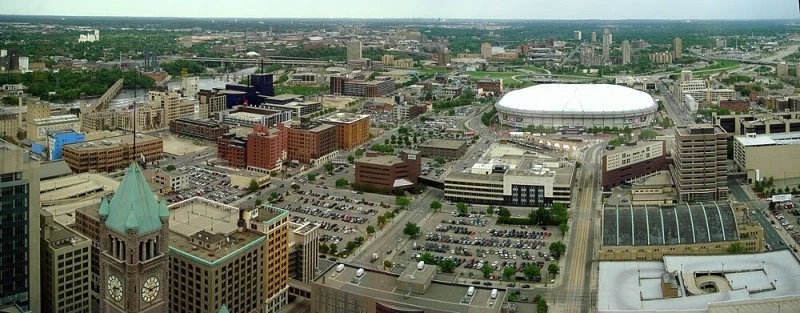
The picture is even more stark in the Detroit/Dearborn district. The election of Abdullah Hammoud, the first Arab Muslim mayor in the United States, in 2021 has made the region a symbolic hub on a national scale. Mamdani's success would not only strengthen the region morally, but also open the door to similar, progressive transformation in Detroit's economic and social policies. Since the Dearborn–Detroit axis currently has the strongest political basis for Muslim-Palestinian solidarity, joint campaigns along this axis can be expected to increase further
Minneapolis/St. Paul, on the other hand, has long been a symbolic city of progressive immigrant politics thanks to Ilhan Omar's national representation. Her victory in New York offers both courage and a practical model for young Muslim candidates in this region. Given the strong coalition of the Somali-American community and the Latino and Black progressive movements, a serious Muslim mayoral race in Minneapolis by 2029 is no longer a distant prospect.In Los Angeles, while the Muslim community is more dispersed (with a diverse population of Pakistani, Iranian, Afghan, Ethiopian, and Arab origins), political mobilization may develop not around identity politics but around the rent crisis, economic justice, and immigrant rights. Therefore, New York's social justice-centered model may resonate in LA through class struggle rather than cultural representation. While a Muslim mayor appears unlikely by the next election, a significant increase in city council and district-level representation is expected. Houston/Dallas, on the other hand, has a more conservative state system, but its new base, particularly in Houston's energy sector, highly educated immigrants, and young Muslim professionals, is increasingly politicized. Therefore, Mamdani's success could increase the visibility of "liberal Islamist" or "social justice Muslim" identities there. Given Texas's changing demographics, it's not unlikely that Houston will become a "blue" city by 2033; in fact, one of the triggers that could accelerate this transformation could be precisely the political momentum generated by figures like Mamdani. Consequently, it's no coincidence that Trump and similar populist-nationalist ideologies are rapidly losing ground in global cities like New York, Chicago, and Los Angeles. These metropolises are demographically immigrant-heavy, economically interconnected, and culturally global. Thus, while Trumpism's influence is now confined to suburban and rural America, major cities are becoming the new laboratories of post-Trump politics. Zohran Mamdani's victory is emblematic of this very transformation: it is not merely an electoral victory, but a concrete demonstration of how the demographic and economic realities of cities provide a natural line of resistance to populist-nationalist ideologies. New York, Houston, and other metropolitan areas are no longer simply Democratic strongholds; they are also places where diversity, inclusion, and the demand for social justice are redefining politics. Mamdani's rise is not only a historical turning point that has increased the visibility of liberal and social justice identities; it also clearly demonstrates that the weight of urban voters is beginning to shift the direction of national politics.

